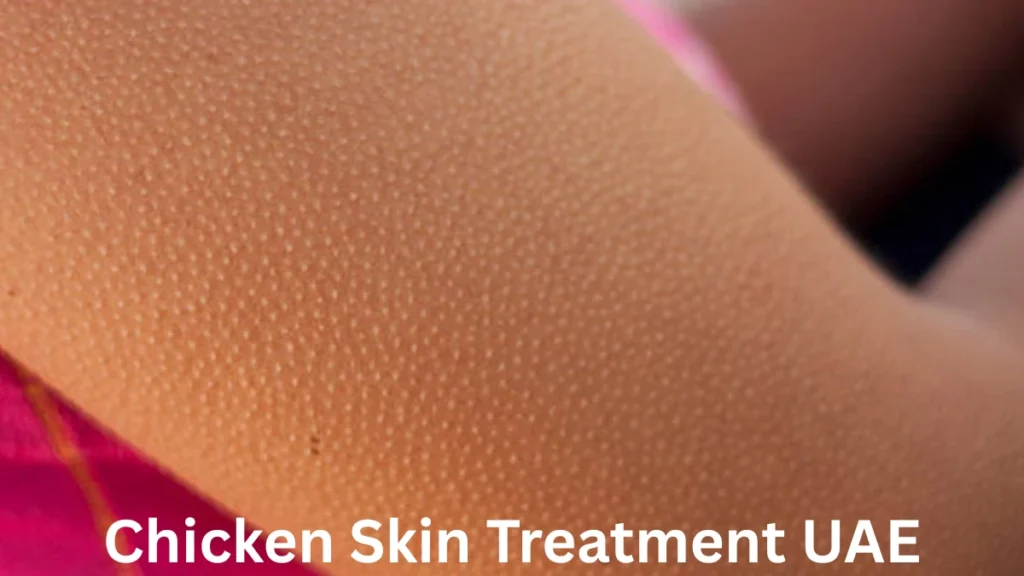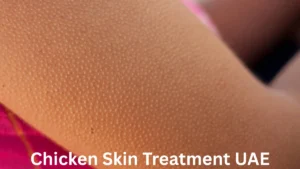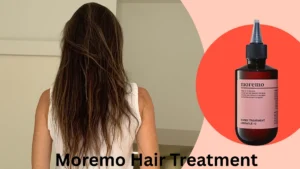“Chicken skin” may sound quirky, but it’s a real and common skin condition that affects people of all ages. Medically known as keratosis pilaris, this harmless condition results in tiny, rough bumps, usually on the upper arms, thighs, buttocks, or even cheeks. While it doesn’t require medical treatment, chicken skin treatment options can help smooth your skin and improve its appearance significantly.
In this guide, we’ll cover everything from causes and symptoms to dermatologist-approved and home remedies that work.
| Category | Details |
|---|---|
| Condition Name | Keratosis Pilaris (commonly called Chicken Skin) |
| Appearance | Small, rough, goosebump-like bumps on arms, thighs, buttocks, and cheeks |
| Primary Cause | Buildup of keratin blocking hair follicles |
| Risk Factors | Dry skin, family history, adolescence, hormonal changes |
| Is It Contagious? | No |
| Common Symptoms | Bumpy texture, mild redness, rough patches, no pain |
| Treatment Type | Topical creams, exfoliation, moisturizing, laser therapy |
| Best Ingredients | Urea, Lactic Acid, Glycolic Acid, Salicylic Acid, Retinoids |
| Recommended Products | AHA lotions, gentle scrubs, fragrance-free moisturizers |
| Dermatologist Options | Chemical peels, prescription retinoids, laser treatment |
| Home Remedies | Warm baths, gentle exfoliation, coconut oil, humidifiers |
| Long-term Care | Moisturize daily, avoid hot showers, use gentle skincare products |
| Prognosis | Improves with consistent care; often fades with age |
What Causes Chicken Skin (Keratosis Pilaris)?

Chicken skin occurs when keratin, a protein that protects the skin, builds up and clogs your hair follicles. This buildup creates rough, bumpy patches that resemble goosebumps or sandpaper.
Common Causes:
- Excess keratin buildup
- Dry or sensitive skin
- Genetics (runs in families)
- Seasonal dryness (worse in winter)
- Hormonal changes (common in teens)
Although it’s not dangerous, keratosis pilaris can impact your confidence, especially when it appears on visible areas like the arms or face.
Best Chicken Skin Treatment Options
Here are dermatologist-recommended and at-home solutions that can reduce bumps and give your skin a smoother feel.
Over-the-Counter Creams and Lotions
Look for lotions and body creams with exfoliating or hydrating ingredients:
- Urea (10%) – Softens and moisturizes
- Lactic Acid – Gently exfoliates and hydrates
- Salicylic Acid / Glycolic Acid – Removes dead skin cells
These products are typically available in pharmacies without a prescription.
Read more: Facial Treatment: The Ultimate Guide to Glowing, Healthy Skin
Prescription Treatments
For stubborn or inflamed chicken skin, your dermatologist may prescribe:
- Tretinoin or Retinoid Creams – Increase cell turnover
- Tacrolimus / Pimecrolimus – Help reduce redness and inflammation
These treatments are especially useful if the condition appears on your face.
In-Clinic Dermatological Procedures
- Chemical Peels – Remove layers of dead skin
- Microdermabrasion – Gently resurfaces the skin
- Laser Therapy – Reduces discoloration and persistent redness
These are ideal for those who want faster and more visible results.
Natural and Home Remedies for Chicken Skin
Prefer an at-home approach? Here are simple yet effective ways to treat chicken skin naturally:
Exfoliate Gently
Use a soft loofah, oatmeal scrub, or sugar-based exfoliator to slough off dead skin. Be gentle—scrubbing too hard can make it worse.
Read more: Chemical Peel Treatment Cost: A Comprehensive Guide Backed by Dermatological Expertise
Moisturize Regularly
After every bath or shower, apply a thick moisturizer. Opt for creams that contain:
- Shea Butter
- Coconut Oil
- Aloe Vera
- Glycerin
Warm Baths, Not Hot
Take short, warm baths to soften the keratin plugs. Avoid hot water, which dries the skin further.
Use a Humidifier
Adding moisture to the air in your home can help prevent dryness that worsens chicken skin.
Common Mistakes to Avoid
Many people unknowingly make their condition worse. Here’s what NOT to do:
- Over-exfoliating or using harsh scrubs
- Using hot showers frequently
- Ignoring moisturization
- Wearing tight clothes that irritate the skin
Stick to a gentle skincare routine to see long-term improvement.
When to See a Dermatologist
If home remedies don’t work after a few weeks, or if you have severe inflammation, redness, or discomfort, consult a dermatologist. Also seek medical advice if:
- The condition spreads quickly
- It appears on your face or cheeks
- You have family history of skin disorders
- OTC products cause irritation or allergies
Long-Term Skin Care Tips
Managing keratosis pilaris is a long-term effort. Follow these daily habits:
- Moisturize right after bathing
- Use a gentle exfoliant 2–3 times per week
- Switch to fragrance-free, non-comedogenic products
- Adjust your skincare by season (more hydration in winter)
Chicken Skin Treatment FAQs
Q1. Is chicken skin permanent?
Not necessarily. Many people see improvement over time with a consistent skincare routine.
Q2. Can I exfoliate daily?
No. Daily exfoliation can irritate the skin. 2–3 times a week is enough.
Q3. Does diet affect keratosis pilaris?
Some people find improvement by eating more omega-3 fatty acids and avoiding processed sugar, though results vary.
Q4. Can children get chicken skin?
Yes, it’s common in children and teens. It often fades with age.
Q5. Is keratosis pilaris contagious?
No, it’s not contagious or infectious.
Chicken Skin Treatment Options Table
| Treatment Type | Key Ingredient | Purpose | Availability |
|---|---|---|---|
| Moisturizer | Urea, Lactic Acid | Soften & hydrate skin | Over-the-counter |
| Chemical Exfoliants | Salicylic Acid, Glycolic | Remove dead skin buildup | Over-the-counter |
| Prescription Creams | Tretinoin | Increase skin turnover | Dermatologist Only |
| Anti-inflammatory Cream | Tacrolimus, Pimecrolimus | Reduce redness and inflammation | Dermatologist Only |
| Laser Therapy | N/A | Reduce bumps and pigmentation | In-Clinic Procedure |
Final Thoughts: Smooth Skin is Achievable
While chicken skin or keratosis pilaris is not dangerous, it can affect how confident you feel about your skin. The good news? With the right chicken skin treatment — including exfoliation, moisturizing, and occasional dermatologist care — you can manage and even reverse its appearance.
Stick with a routine, avoid harsh products, and stay hydrated for smoother, glowing skin over time.





